Disclaimer: This website contains affiliate links, from which Heritage Acres Market LLC may receive a small commission from the vendor on the sales of certain items, all at no cost to you. Please read our full disclosure for more information. Thank you for supporting Heritage Acres Market LLC!
Deciding on the right chicken to make up your backyard flock isn’t always an easy task. Honestly, there are so many exciting breeds to choose from.
Chickens come in all sizes, shapes, and colors.
And they each have their unique qualities.
And quirks.
Some are great for laying eggs.
Others make good meat birds. Others don’t.
Some chicken breeds can be flighty or aggressive. Others are calm and easy to handle.
When choosing the right chicken breed for you and your farm, having a better understanding of the various breeds of chickens can be very helpful.
In today’s post, we’re going to look at one of the larger birds in the farmyard: The Cochin chicken. While the Cochin is not known for being a good layer or the best meat bird, its large size, distinctive fluffy look, and large feather legged chickens inspired a nation to start keeping backyard chickens. And its gentle, quiet nature has won the heart of many a chicken owner.
But is the Cochin the right chicken for you? In today’s post, we’ll go well beyond Cochin’s fluff to see just what this bird is all about to help you decide.
Is the Cochin Chicken right for your flock?
- Cochins make excellent companions for chicken keepers
- They are not a good choice for egg production
- Cochin chickens have great personalities and are good for beginners and children
Table of Contents
The History of the Cochin Chicken
Although the exact origin of the Cochin chicken breed is a matter of debate, most people believe that the Cochin originated in the Shanghai Provence in China in 1840. The Cochin is one of the largest breeds of chicken. In addition to its unusual size and large eggs (which it lays even in the winter), the Cochin is remarkable for its plush and excessive plumage. Covered in thick, fluffy feathers from its beak down to its toes, Cochin chickens, along with the Brahma chicken, are attributed with causing a sensation in the 1850s, with all things chicken (referred to as “hen fever”). The American Poultry Association recognized them in 1874.
The Cochin breed is currently listed on the Heritage Breeds poultry list as “recovering.” This means that although the breed is not in danger of extinction, there are fewer than 1,000 breeding birds in the United States.
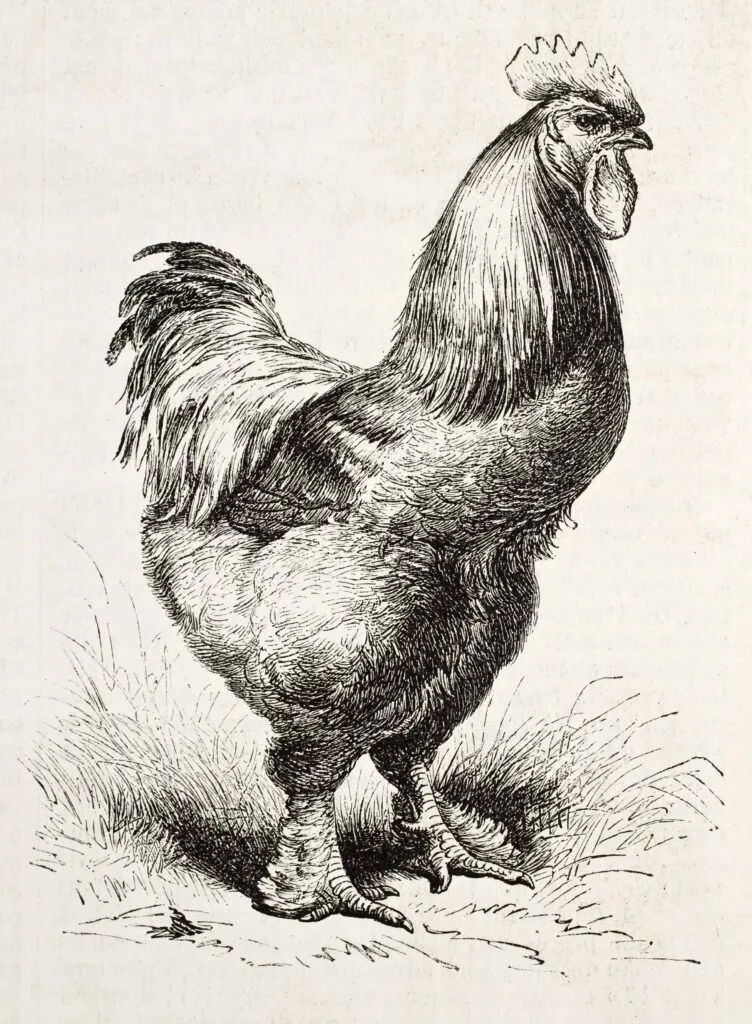
What do Cochins look like?
While knowing the history of a breed of chicken is fascinating, it won’t exactly help you decide whether or not you want to add one to your flock. So let’s take a look at some of the more important details of Cochin chickens.
First, what does a Cochin chicken look like?
Cochins are a large fowl. They have a fluffy, thickly feathered look. The Cochin chicken is covered in a mass of feathers from its beak to its toes. Much like the feathers on the legs of a Clydesdale, Cochins have many fluffy feathers around their shanks and even cover their toes. This thick coat of feathers makes the Cochin look even bigger than it actually is.
Indeed, it’s this feathered profuseness that gives Cochin chickens their unique, appealing look.
All those feathers also help insulate these chickens from the cold. Because of their extra layers of feathers, the Cochin, unlike most other chickens, does very well in winter conditions. Cochins tend to be very hardy birds.
Cochin chickens feathers generally look like those of any other chicken (only fluffier). But there is also a “frizzle” variety of Cochin. The feather on these birds curls outwards, appearing to be frizzled feathers, giving the Frizzle Cochin its name. A frizzle gene causes this frizzle feather appearance.
Cochins have single combs, with a red wattle, and even red earlobes.
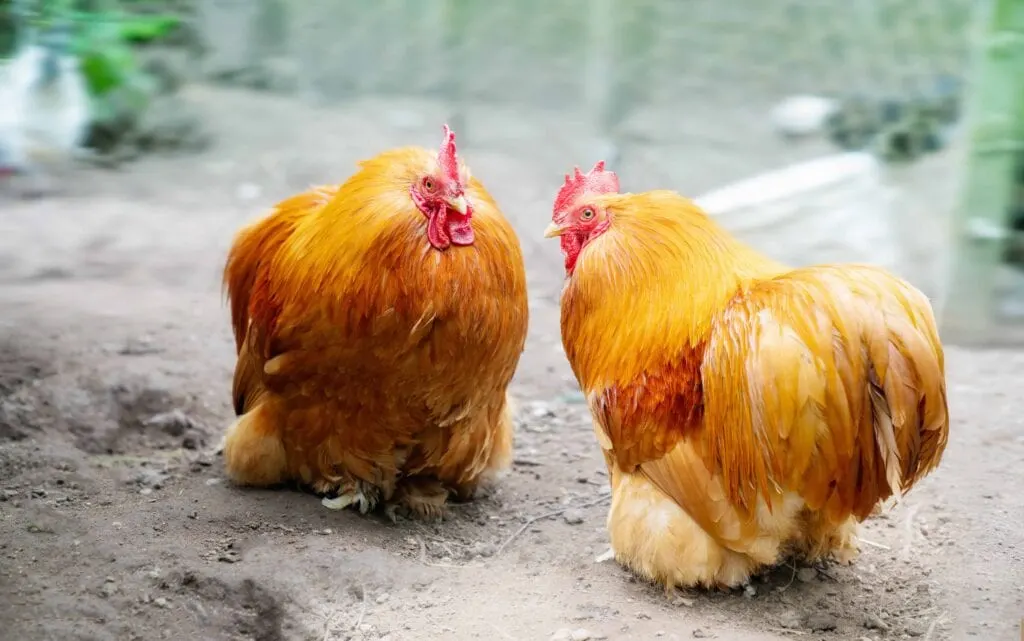
How big are they?
Cochins are big.
Really big.
In fact, Cochin chickens are considered one of the largest chicken breeds. A cochin rooster can weigh up to 11 pounds, and hens often weigh in at 8.5 pounds.
They also lay big eggs.
In addition to their actual size, all those fluffy feathers tend to make Cochin chickens look even bigger than they actually are.
But if big isn’t what you’re looking for, don’t worry. Here in the United States, The American Bantam Society recognizes both the full size and bantam Cochin (sometimes called a “Pekin”). The bantam variety has been bred down from full-size birds to develop the miniature version of the bird. A Cochin bantam usually weighs 26 to 30 ounces.
Adding to their unique appearance, Cochin chickens come in several different colors according to the American Poultry Association, including:
- Buff Cochin
- Partridge cochin
- White cochin
- Black cochin
- Silver Laced cochin
- Golden Laced cochin
- Blue cochin
- Brown cochin
- Barred cochin
The most common color variation is white. There are other colors as well, like the Splash Cochin, but the American Poultry Association does not recognize them.
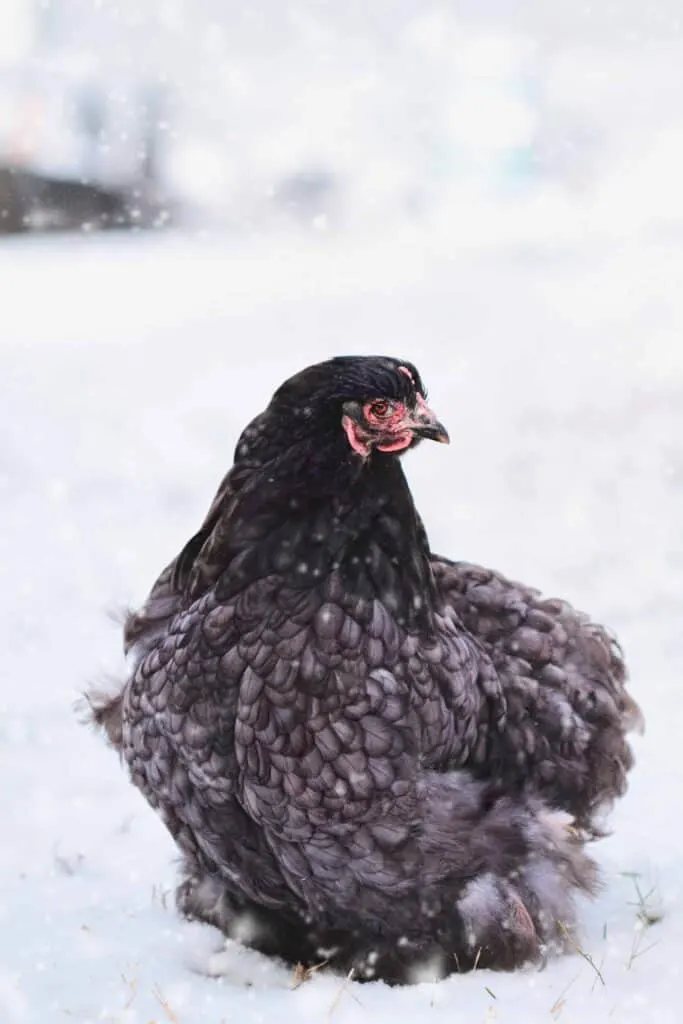
Egg Laying and Meat Production
Although originally bred for its large size, huge eggs, and quick maturation rate (these birds were bred to be table-ready at 12 weeks), Cochin chickens did not do well commercially. As we’ll touch on a bit more below, they were not particularly good layers, and their meat was coarse.
When it was originally bred, the Cochin chicken was a large, rather tall bird. And it never was a particularly good layer or a great meat bird, so it did not do well commercially. Over the years, it has been bred more and more for its unique fluffy look-making it even less commercially successful.
That means that today’s Cochin, while still big, is neither a great egg-laying bird nor all that good for meat.
But hey, they’re cute!
And they have wonderful temperaments. So Cochin chickens are most often used for show or are kept as pets.
Cochins tend to be a more broody hen-which can be a great thing if you want to hatch eggs, and they make excellent mothers. Even the roosters have been known to sit on the eggs.
Given their broodiness and enormous size, Cochins can even be used to hatch turkey or duck eggs.
As for laying their own eggs, however, it is essential to know that Cochins are a slow maturing bird. This means that, where other chickens start to lay eggs at around six months, Cochins generally will not start laying eggs until they are about 8 to 9 months old. The eggs are brown in color and are medium to large in size.
Cochins are not known for having reliable egg production. A Cochin hen will only lay about 150 to 180 eggs a year and stop laying eggs altogether after 2 to 3 years. (Less if you force them to lay year-round.)
Interestingly, where other chickens generally slow down or do not lay during the winter, Cochins are known for producing eggs throughout the winter.
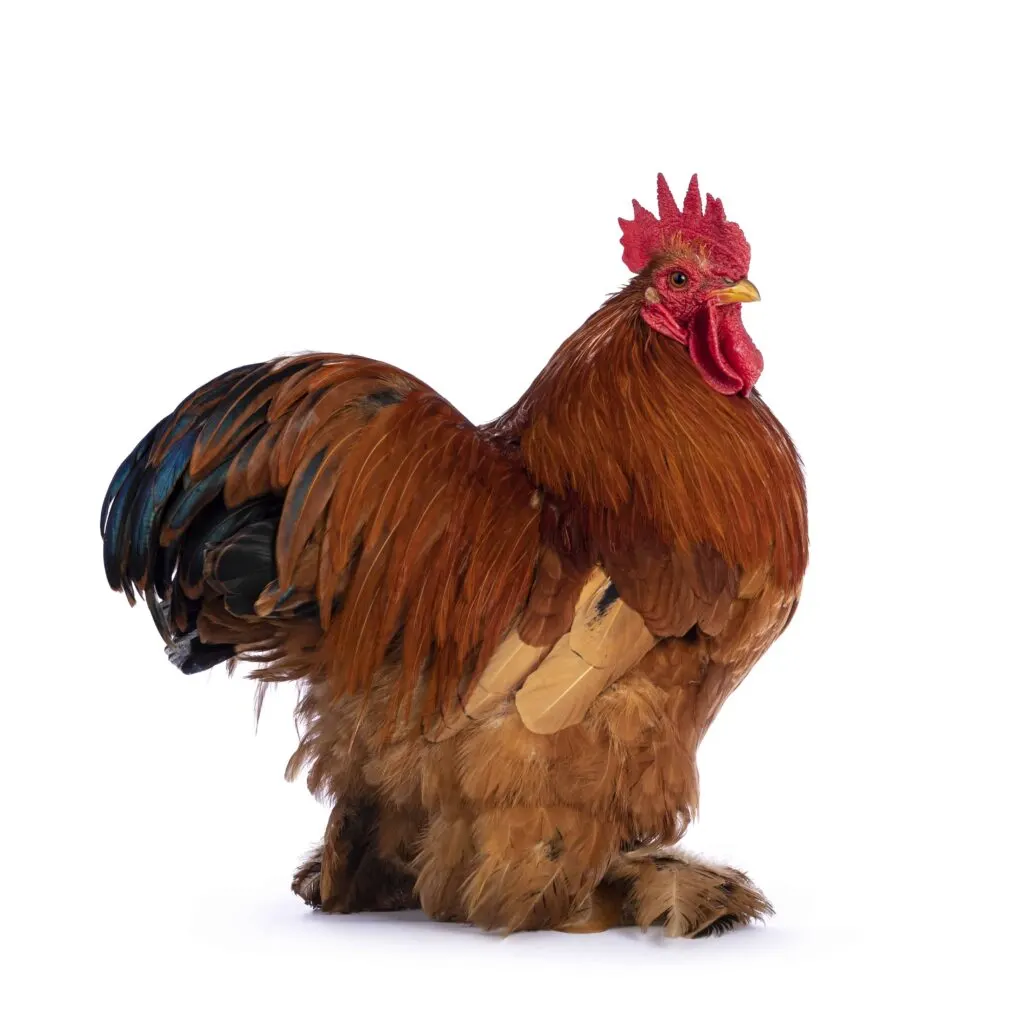
Temperament of a Cochin
While they may not be champion egg-layers or the tastiest bird in the coop, when it comes to temperament, the Cochin can’t be beaten.
Cochins are known for having friendly personalities. They are incredibly gentle and make fantastic pets. The full-size (not Bantam) males are rarely aggressive. Overall, Cochins do not tend to pick on each other or fight within the flock.
They are not flighty and don’t like to wander, so you won’t need more than a two-foot fence to keep them around.
They are great for children, beginner chicken handlers, or as show birds.
Cochins are quiet, gentle, and very easily tamed. They love to be handled and make marvelous pets.
Health Problems
Like all chickens, Cochin chickens are susceptible to mites and parasites.
But they can have other health problems as well.
In particular, the bird’s large size, along with its tendency to eat a lot and move very little, can lead to obesity.
Cochins move slowly and would rather eat what’s in front of them than run around foraging, so it is essential to keep an eye on how much they are eating because they tend to get fat.
Because they are already so fluffy looking, it can be difficult to tell whether your Cochin is gaining too much weight just by looking at him.
One solution to this is to ration the food. Another is to weigh your chicken regularly.
The excessive feathering on their legs and toes can also cause problems. For example, if the leg or toe feathers get wet and then freeze, it can lead to frostbite.
The heavy feathering on a Cochin protects them in winter, but it can cause problems for them in the heat of the summer months or hotter climates. Make sure your birds always have access to plenty of water, shade, and even a few ice blocks in hot weather to help them stay cool.
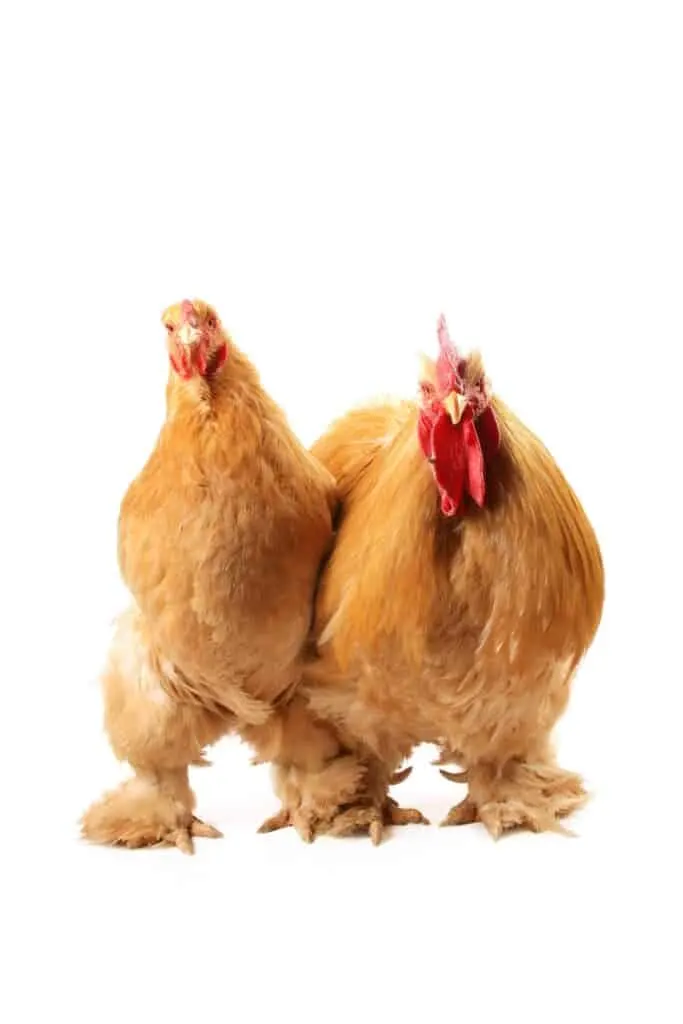
Think You Want a Cochin?
If you think you would like to add a Cochin or two to your flock, you will be happy to learn that they are relatively easy to come by.
While prices may vary, single baby chicks can be purchased for anywhere from $3.00 to $5.00 dollars per chick and may be purchased from several hatcheries.
If you are looking to buy Cochin chicks, check out Cackle Hatchery.
Cackle Hatchery is our preferred and recommended hatchery. While most hatcheries require orders of at least 25 chicks, you can buy as few as 3 chicks from Cackle. They are also highly rated on Google and have been in business since 1936.
Conclusion
Cochin chickens are an eye-catching chicken breed with a friendly personality and make for a great backyard chicken.
Granted, it may not be the best choice if you are looking to raise chickens for reliable egg production or meat.
But if you are looking for a bird that is great at hatching eggs, or one that will make a wonderful family friend, pet, or 4H project, this gentle, fluffy bird just may be what you are looking for.
